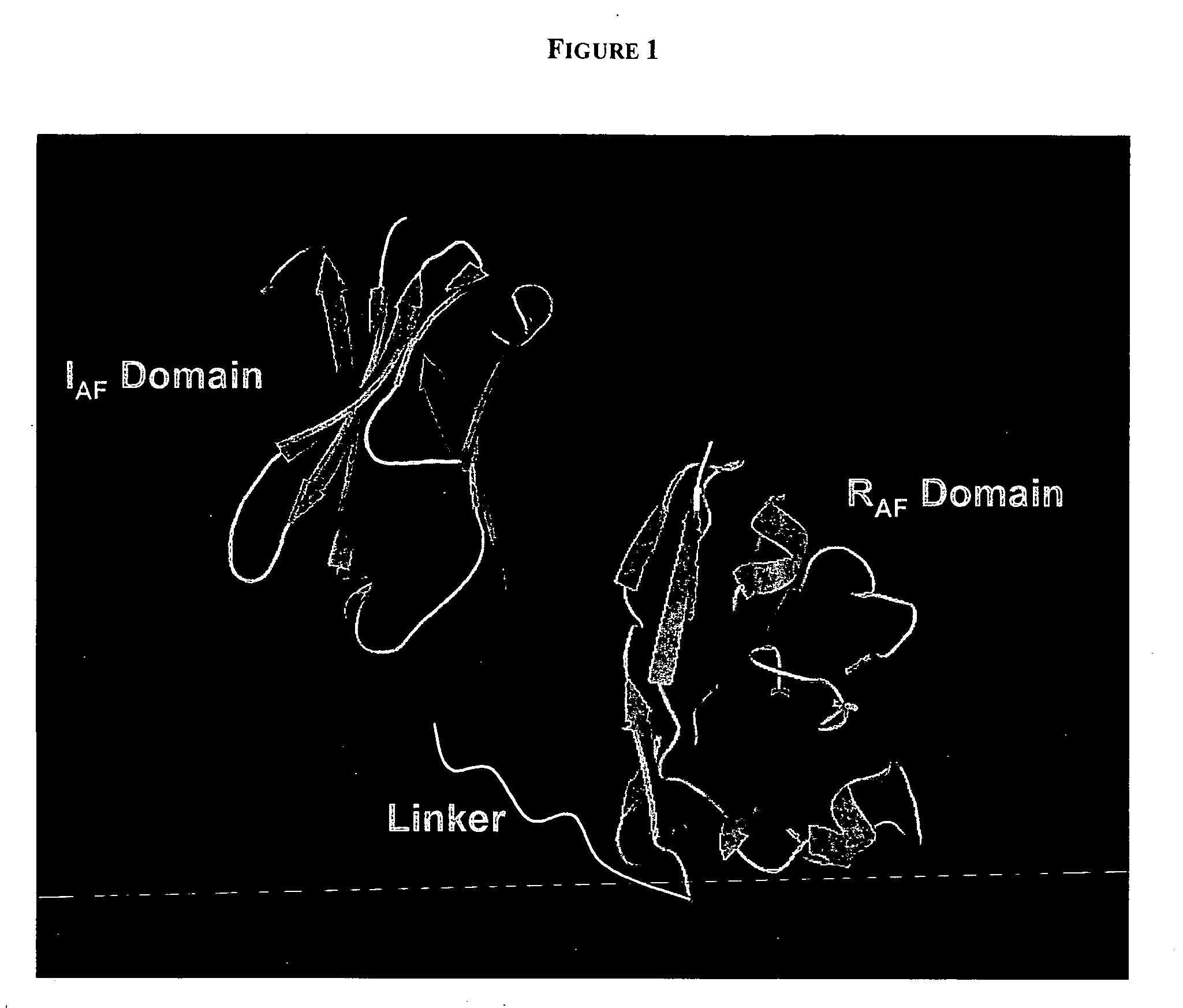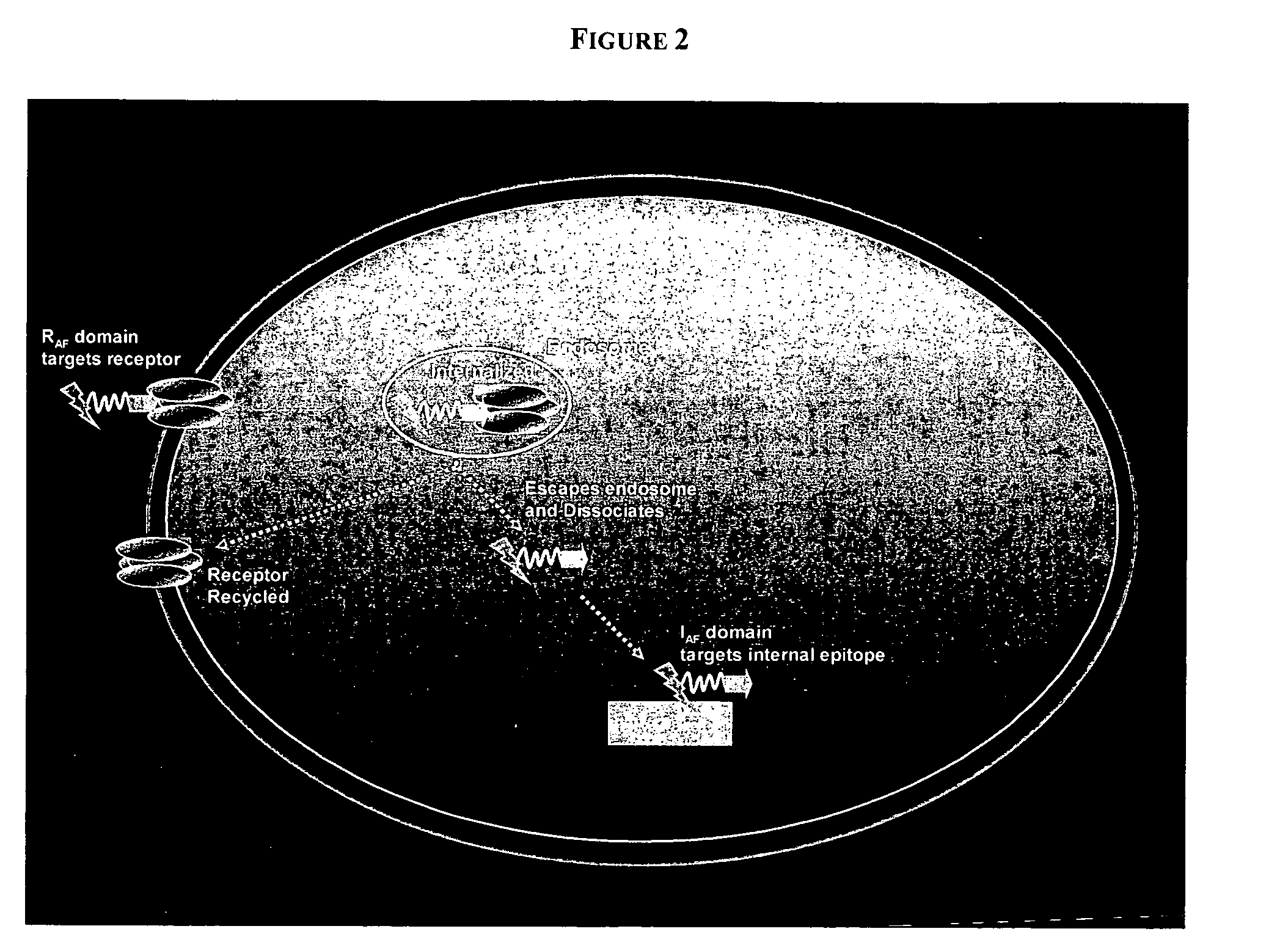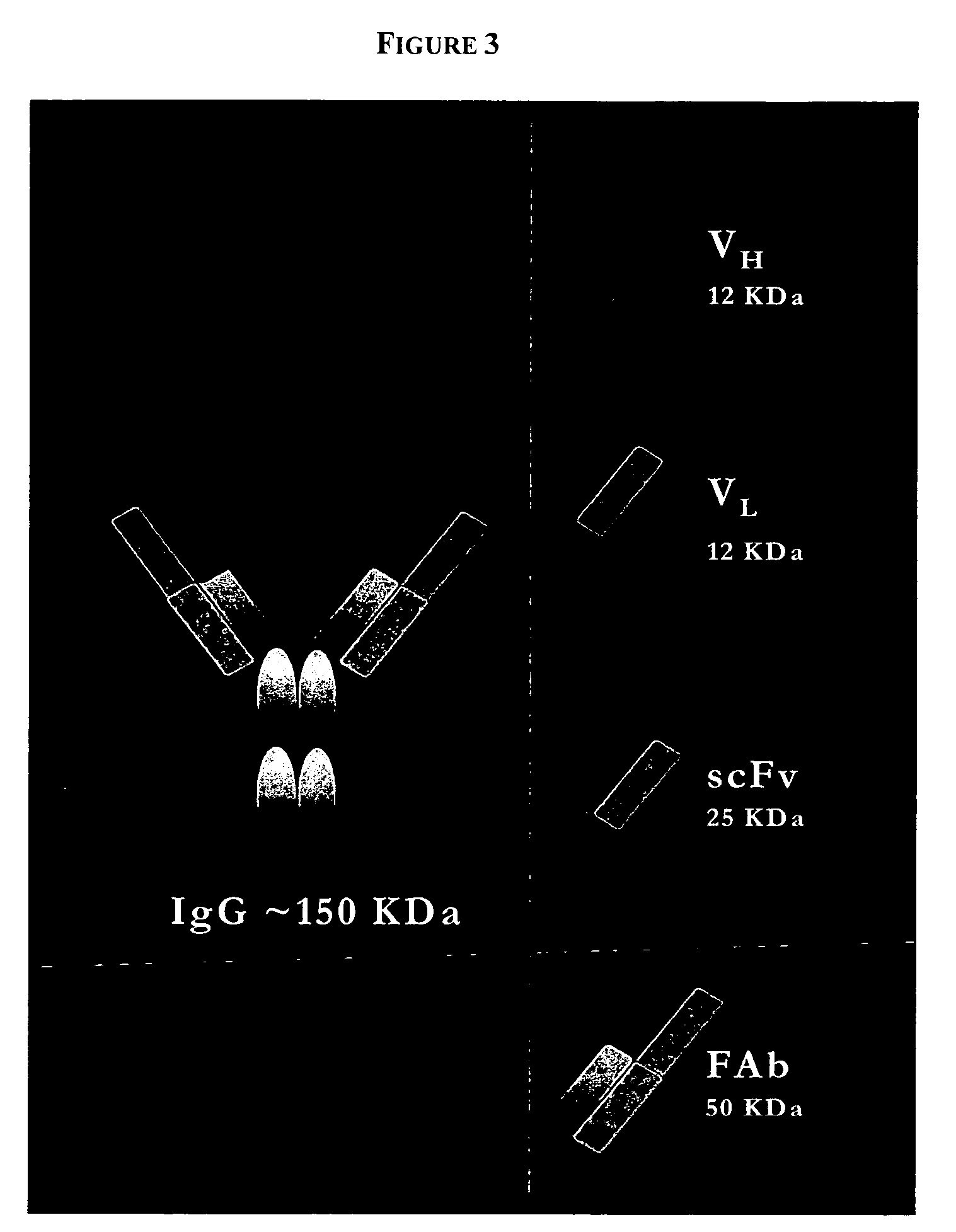PenetraBodies: receptor-mediated targeted delivery of functionally-active human antibody fragments into cytosol for the treatment of chronic infections and diseases
a technology of penetrabodies and human antibodies, which is applied in the field of making and using penetrabodies for the treatment of chronic infections and diseases, can solve the problems of large number of intrabodies used within cells that are not functional, small molecule drugs exhibit serious side effects and toxicities, and the antigen binding properties are not compromised. , to achieve the effect of small size and low cos
- Summary
- Abstract
- Description
- Claims
- Application Information
AI Technical Summary
Benefits of technology
Problems solved by technology
Method used
Image
Examples
examples
[0209] The present invention will now be described by way of examples, which are meant to illustrate, but not limit, the scope of the invention.
[0210] The Examples herein are meant to exemplify the various aspects of carrying out the invention and are not intended to limit the scope of the invention in any way. The Examples do not include detailed descriptions for conventional methods employed, such as in the construction of vectors, the insertion of cDNA into such vectors, or the introduction of the resulting vectors into the appropriate host. Such methods are well known to those skilled in the art and are described in numerous publications, for example, Sambrook, Fritsch, and Maniatis, Molecular Cloning: A Laboratory Manual, 2nd Edition, Cold Spring Harbor Laboratory Press, USA, (1989). The practice of the present invention employs, unless otherwise indicated, conventional methods of virology, microbiology, molecular biology, antibody engineering, and recombinant DNA techniques w...
example i
Generation of HuMAb Bacterial Display Library
[0211] Non-immune HuMAb libraries will be constructed by APEx display technology in E. coli. These libraries may be constructed in scFv, VH and VL formats, as necessary. The following commercial sources of RNA will be employed as template: human normal lymph node 5 mg Poly(A)+ RNA pooled from 29 females / males (Clontech, Palo Alto, Calif.); human normal spleen 5 mg Poly(A)+ RNA pooled from 14 females / males (Clontech); human normal spleen 5 mg Poly(A)+ RNA pooled from 7 females / males (Origene, Rockville, Md.); human normal spleen 5 mg Poly(A)+ RNA pooled from 8 females / males (Biochain Inst., Hayward, Calif.). Superscript II (Gibco BRL, Rockville, Md.) first strand synthesis reactions will be set up to generate cDNA from RNA obtained from the fours sources just listed. A total of 16 reactions (4 per each RNA source) will be set up using gene-specific primers to amplify the IgG, IgM heavy chains, and the g and k light chains. The HuIgG, HuIg...
example ii
Selection of Cell-Specific RAF Domain of PenetraBody
[0220] Described here is a method to isolate RAF domains as scFv (or VH or VL formats) that selectively binds a receptor and triggers receptor-mediated endocytosis (FIG. 4). In particular, this example mentions specific cell types representing CD4+ T cells and hepatocyte cell lines for the isolation of RAF domains of HIV and HCV PenetraBodies, respectively. The subtractive cell lines that will be used are: normal human fibroblasts and MCF7 cells grown in DMEM, 10% (v / v) fetal bovine serum (FBS) (Hyclone), normal human breast cell line Hs 518Bst (ATCC) in DMEM, 10% fetal calf serum complemented with 10 □g / ml bovine insulin and 30 ng / ml epidermal growth factor (EGF), and B-lymphocyte WI-L2 (ATCC CRL-8062) in RPMI 1640 medium supplemented with 10% FCS. Subtractive cell lines are not infected by HIV and HCV.
[0221] The target cell lines used for the HCV infection studies will be: Hep3B (ATCC), Huh 7.5 propagated in Dulbecco modified E...
PUM
| Property | Measurement | Unit |
|---|---|---|
| Temperature | aaaaa | aaaaa |
| Temperature | aaaaa | aaaaa |
| Time | aaaaa | aaaaa |
Abstract
Description
Claims
Application Information
 Login to View More
Login to View More - R&D
- Intellectual Property
- Life Sciences
- Materials
- Tech Scout
- Unparalleled Data Quality
- Higher Quality Content
- 60% Fewer Hallucinations
Browse by: Latest US Patents, China's latest patents, Technical Efficacy Thesaurus, Application Domain, Technology Topic, Popular Technical Reports.
© 2025 PatSnap. All rights reserved.Legal|Privacy policy|Modern Slavery Act Transparency Statement|Sitemap|About US| Contact US: help@patsnap.com



